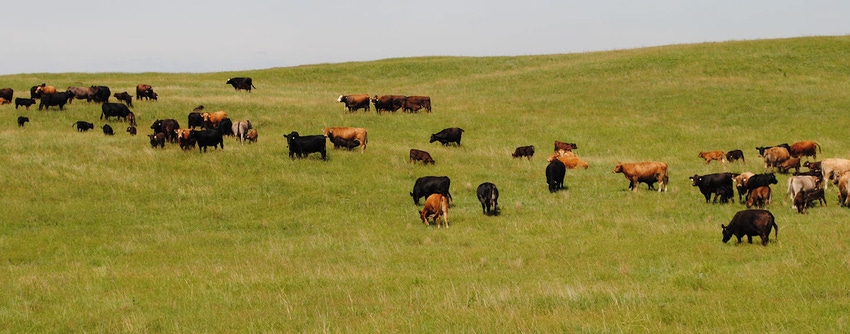
While we are always interested in seeing our stock do well, our management should vary depending upon what we are trying to accomplish at any given time.
Much of the time management will be designed to supply sufficient nutrition to as much stock as is feasible. Going into winter with a set of dry cows, the goal might change to stretching a supply of dormant grass into as many days of adequate nutrition as possible.
There will also be times when the goal is to maximize the amount of nutrition that a set of animals take in from pasture. Animals being fattened for slaughter, dairy cows in the milk string and young animals being pushed for gain are the examples that come to mind.
Lack of protein is seldom a problem on properly grazed green pasture but protein can be too high for best performance of fattening or milking animals if the forage is grazed at very immature stages.
The usual hang up for high performance is energy. As the leaf of a forage plant matures, from emergence to a fully functioning carbohydrate factory, the ratio of energy to protein increases until the leaf ages to a point where its ability to create energy through photosynthesis is impaired. At this point, both protein and energy content will began to decline as highly digestible compounds are replaced with less digestible material.
If we want to maximize animal performance, we must present the forage to the animal when it is in the state that best suits the needs of the animal. With young growing animals, this state will be when the protein-to-energy ratio is high while fattening and lactating animals will do better on forage with a high energy-to-protein ratio.
High-protein diets will reduce animal performance and can cause metabolic problems when fed to animals with low protein requirements. When animals are fed a diet that is higher in protein and lower in energy than their needs, they burn the excess protein for energy and a portion of the nitrogen content of the protein becomes a waste product that must be disposed of by the body. This excess of protein can also cause off flavors in meat and milk.
Animals that have the opportunity to select their diet from a large amount of growing forage will normally gain well provided that they are not stressed by other factors. These factors would include: heavy parasite loads, poor or insufficient water, extreme temperatures, lack of salt or other essential minerals, and rough handling.
Whips, hot shots and biting dogs have no place in a well run grazing program. If animals cannot be controlled without these stress producers, it is time for re-education: Re-education of the handlers, not the animals. Animals only do what animals do. If they don't do what you want, the fault is yours and not theirs. Show me a set of wild cattle and I will show you a set of wild cowboys. All of our livestock species are prey animals (hunted as opposed to hunting) and will react to perceived threats with the "flight or fight" syndrome. This is a protection mechanism developed over eons to give the animal the tools to outrun or fight a predator.
Digestion stops so that the energy used by this process can be re-directed to countering the threat. Readily available energy stored as fat, both in the liver and intramuscularly (marbling), are called out of storage, and blood sugar, blood pressure and heart rate all increase. This process has a very negative effect on rate of gain and meat quality. If the process is triggered repeatedly, the general wellbeing of the animal will be affected and meat quality will be very poor.
Job number one for graziers should be to keep their charges just as happy, placid and content as is possible for an animal to be.
It can sometimes be helpful to use a group of animals with lower nutritional requirements in a leader-follower mode to reduce the amount of residual forage left by the high-performing leader herd and thus prepare the sward to produce high quality on the next graze period.
Obtaining high gains on forage requires that a large amount of forage pass through the animals quickly. The need for grazing highly digestible forage is a given but having a diverse forage sward is also important. Animals will consume more when there is variety in their diets; eggs just taste better with bacon, biscuits and salsa piquant.
Management for high gain can be summarized in one statement: Using short graze periods in a low stress environment, supply unlimited diverse species forage in a clean dense sward at the proper stage of growth.
About the Author(s)
You May Also Like




